Art Basel’s Unlimited has long been a favourite at the fair’s Swiss edition and organisers are hoping to replicate some of that magic here in Miami with the launch of Meridians, a new section devoted to performance and large-scale works. We caught up with the project’s curator Magalí Arriola, the director of Mexico City’s Museo Tamayo and the curator of Mexico’s presentation at the latest Venice Biennale, who pointed out a few highlights on our whistle-stop tour.
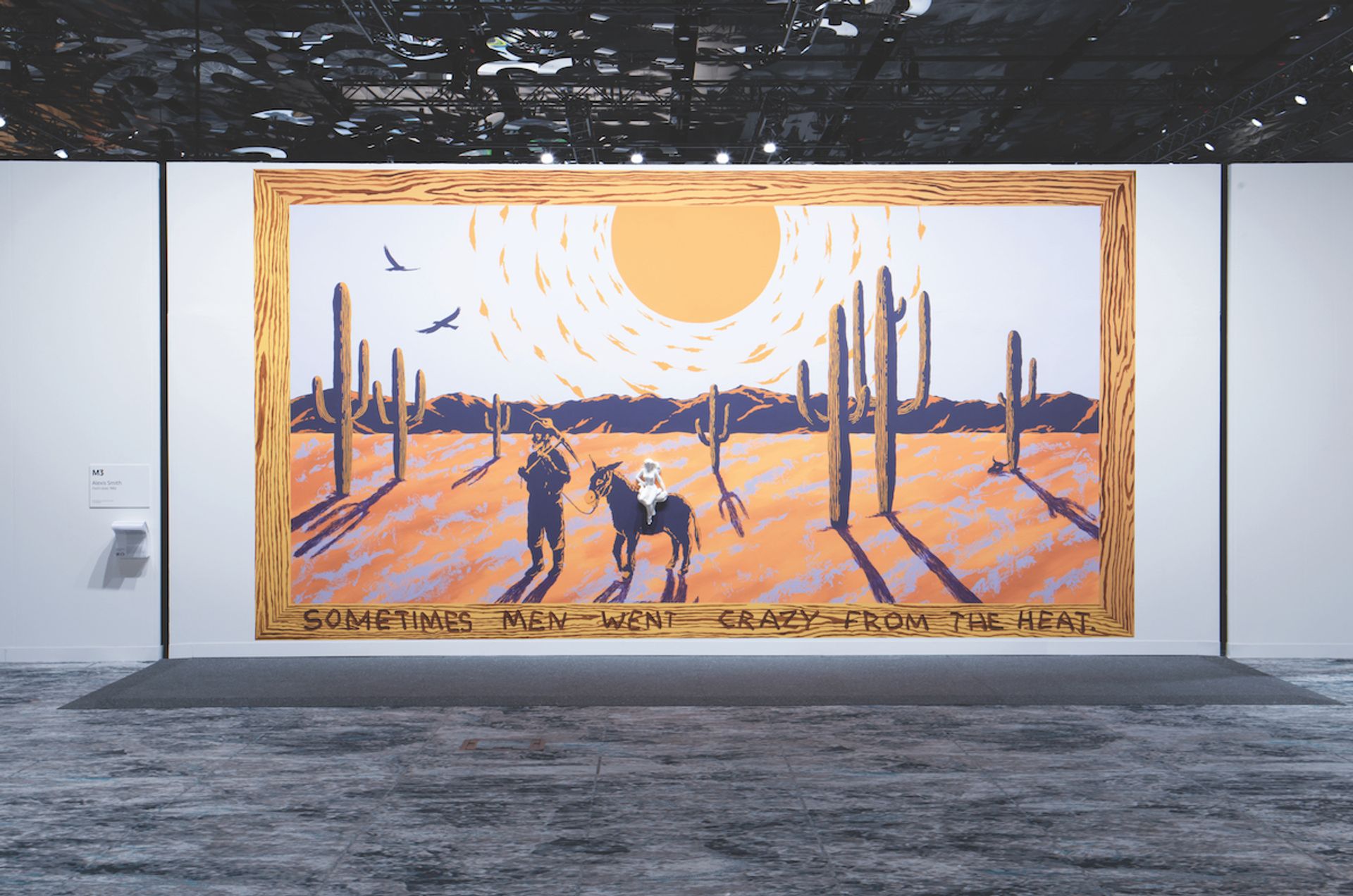
Alexis Smith, Fool’s Gold (1982), Garth Greenan Gallery: Vultures ominously circle overhead as a weary gold miner, pickaxe slung over his shoulder, leads a bikini-clad woman on a donkey through a desert landscape in this large, mixed-media mural by Alexis Smith. The scene is framed by the words: “Sometimes men went crazy from the heat”. “Much of her work has to do with revisiting pulp fiction,” Arriola says of the US artist, who last exhibited this piece nearly 30 years ago at her retrospective in 1991 at New York’s Whitney Museum of American Art. “She often looks at how pulp fiction manipulates the clichés of what a woman should be.” David Owens
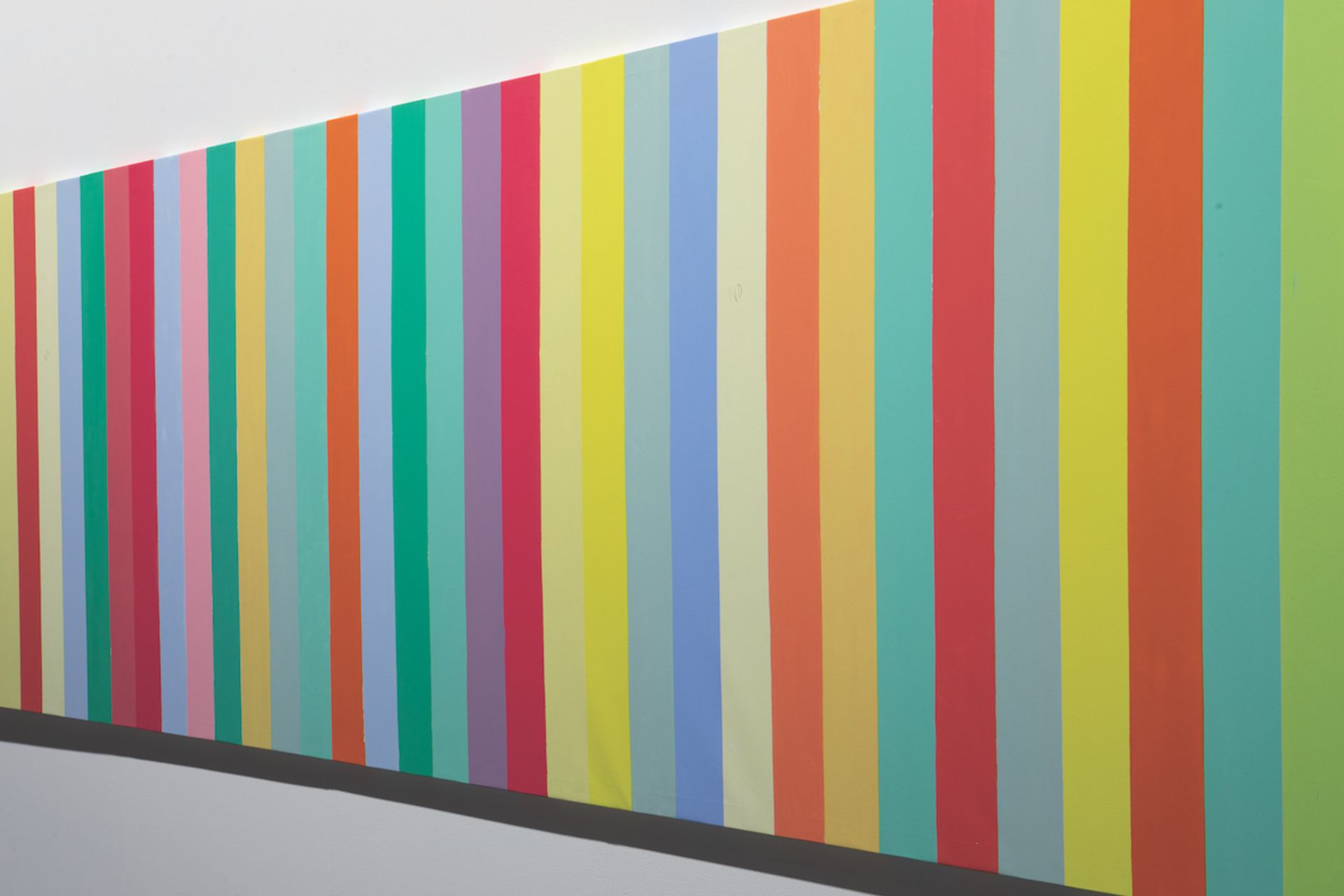
Flavio Garciandía, Auge o decadencia del arte cubano (Pinnacle or Decline of Cuban Art) (2006), Mai 36 Galerie: When it was time for the Cuban conceptualist Flavio Garciandía to create a work for the 2006 Havana Biennial, he enlisted the help of every Cuban artist he knew. Each of the 158 artists painted a different coloured stripe on the 20m-long canvas. “It’s a collaborative work based on a political gesture,” Arriola says. “We thought it was important to include a collective work from Cuban artists in this new section.” David Owens
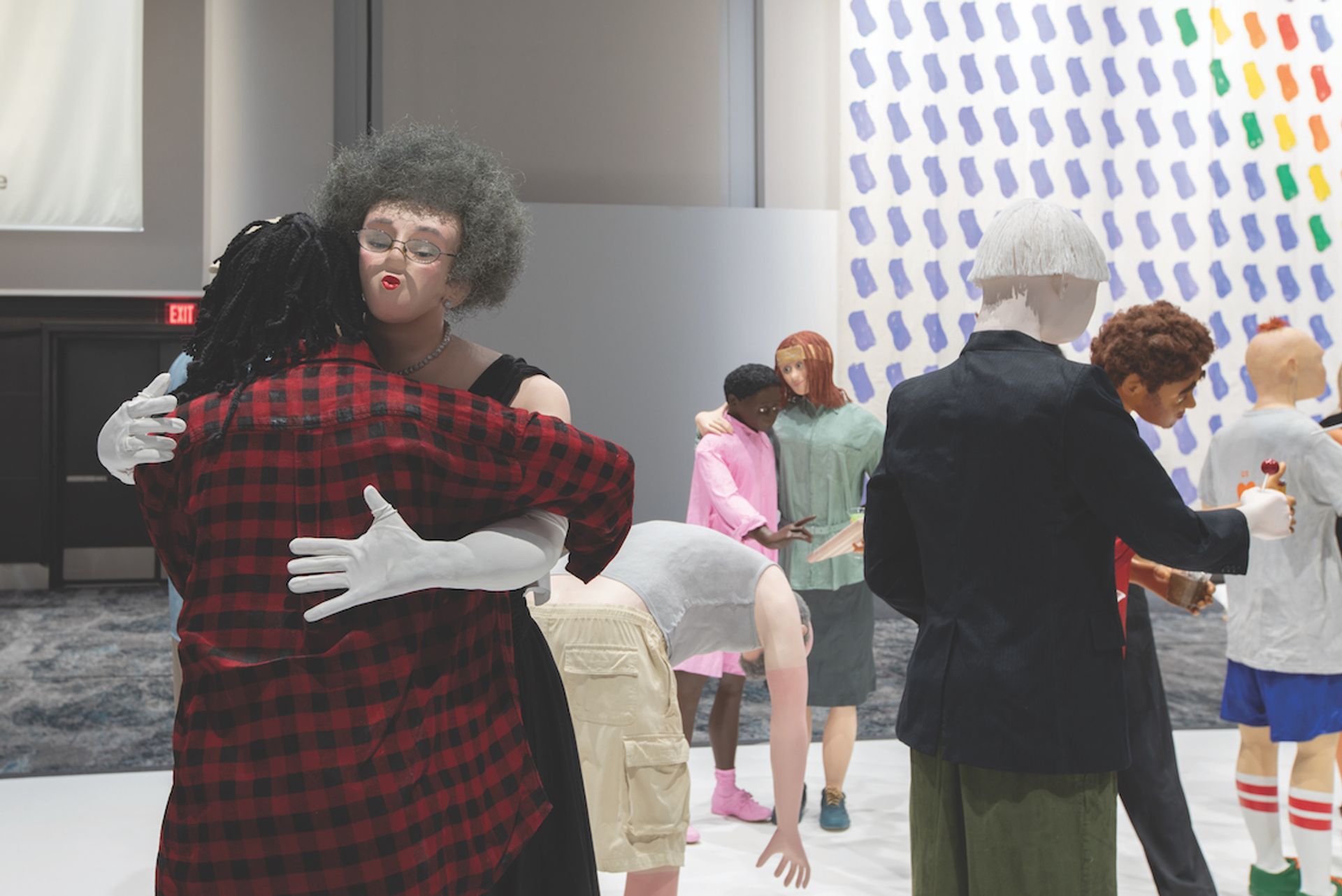
Tom Friedman, Cocktail Party (2015), Stephen Friedman Gallery, Luhring Augustine: “It’s a piece that speaks to the dynamics of the art world,” Arriola says of the US conceptual artist’s take on a typical gallery soirée. A group of 26 lifelike figures—made from Styrofoam covered with clay—stand, sip champagne and engage in small talk in this “living cartoon”. “It was fun to have them here while we were installing the other Meridians projects,” she says, “But it was also disturbing to keep seeing this group out of the corner of your eye. I kept turning around and asking myself: ‘Who are these people?’” David Owens
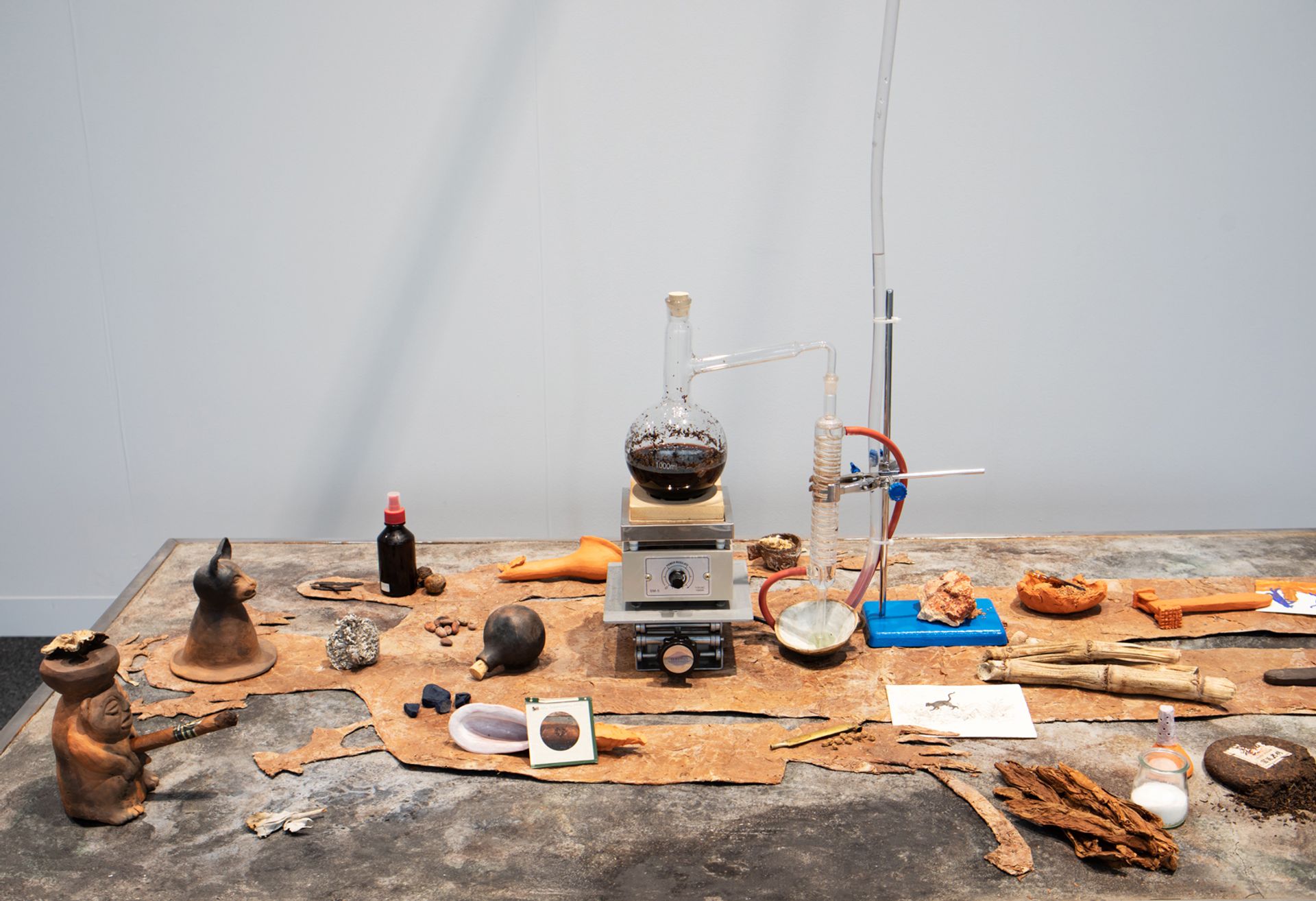
Candice Lin, La Charada China (Tobacco Version) (2019), François Ghebaly: The US artist confronts the historic exploitation of Chinese labourers in the Caribbean and South America with an installation that lays bare the all-too-frequent practice of distilling history. Lin has set up a makeshift distillery in which a beaker filled with water and products associated with the slave trade such as tobacco leaves, poppy seeds and tea is heated and distilled. The liquid then slowly drips onto—and eventually wears away—an unfired lump of porcelain, which acts as a stand-in for the human form. “It’s a reference to Chinese water torture,” Arriola says.
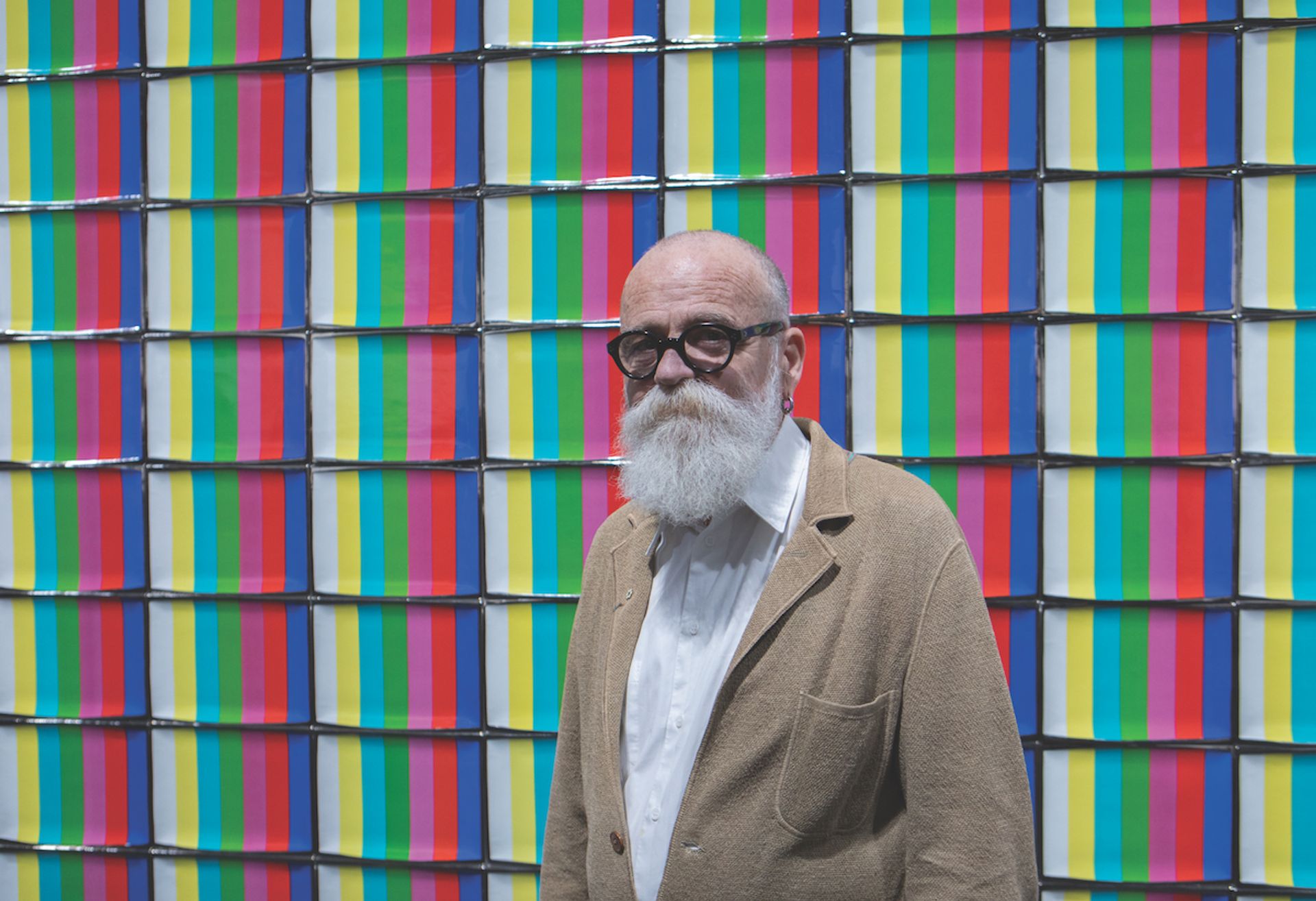
General Idea, Test Pattern: T.V. Dinner Plates from the Miss General Idea Pavilion (1988), Mai 36 Galerie, Mitchell-Innes & Nash, Esther Schipper: This 1988 installation by the artist collective General Idea, founded in 1969 by A.A. Bronson (pictured), Felix Partz and Jorge Zontal, serves up a critique of the rising influence of mass media on culture on a set of 144 porcelain sushi plates. The colour bars printed on the plates are based on the trademarked test pattern found on television screens. “The piece has a waviness and shiny quality to it,” Arriola says. “It has a vibration that you would find on an older TV.” David Owens
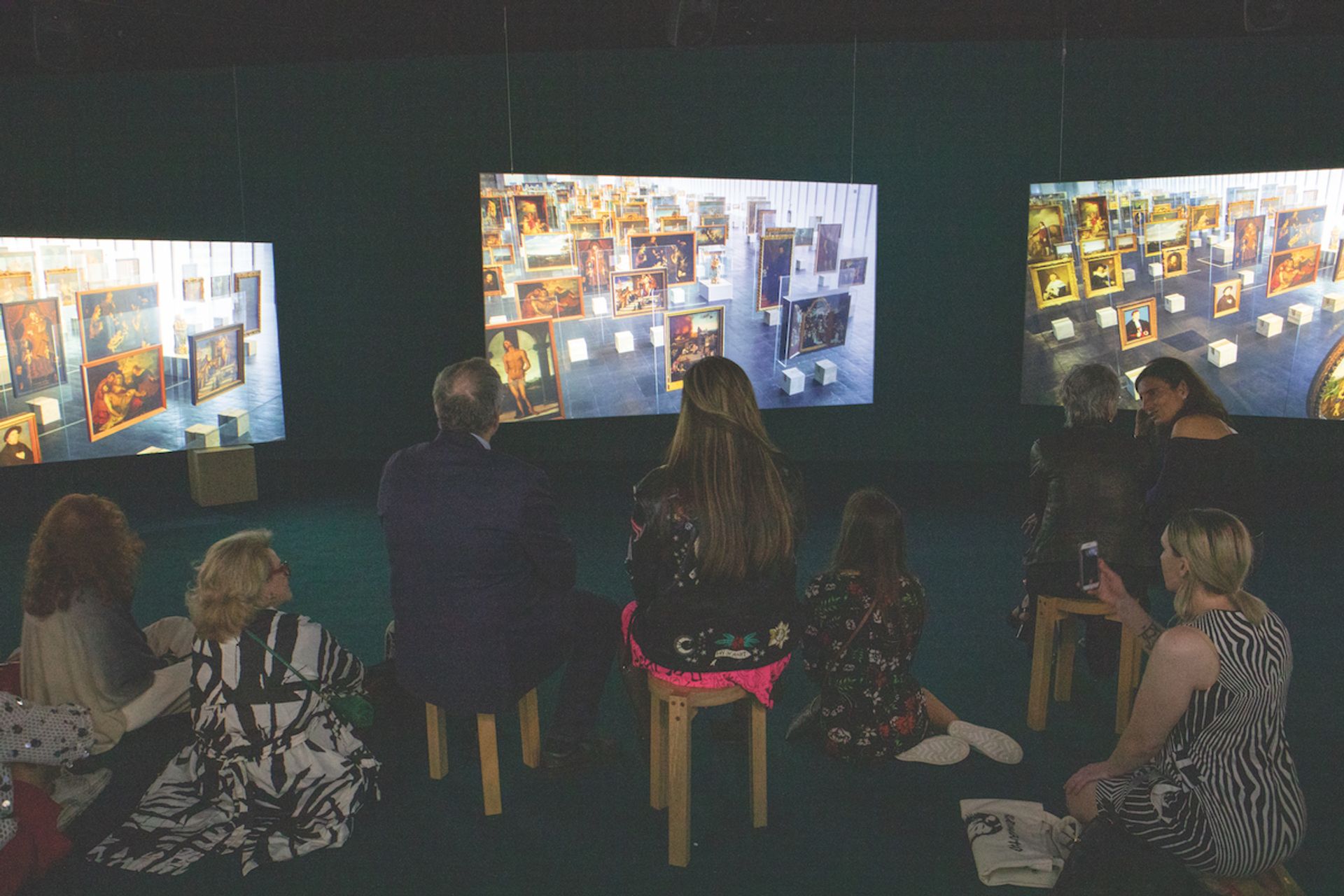
Isaac Julien, Lina Bo Bardi—A Marvellous Entanglement (2019), Victoria Miro, Galeria Nara Roesler, Jessica Silverman Gallery, in collaboration with Ron Mandos: This nine-screen film and sculptural installation by the UK artist and film-maker Isaac Julien considers the legacy of the famed Modernist architect Lina Bo Bardi (1914-92) who was born in Italy but spent much of her life in Brazil, where she championed the power of design to bring about cultural and societal change. In a nod to Bo Bardi’s innovative use of concrete and glass easels in an exhibition at the Museu de Arte de São Paulo (Masp) in 1968, Julien has placed the screens on wood cubes. “Her installation of Masp’s collection was truly revolutionary,” Arriola says.
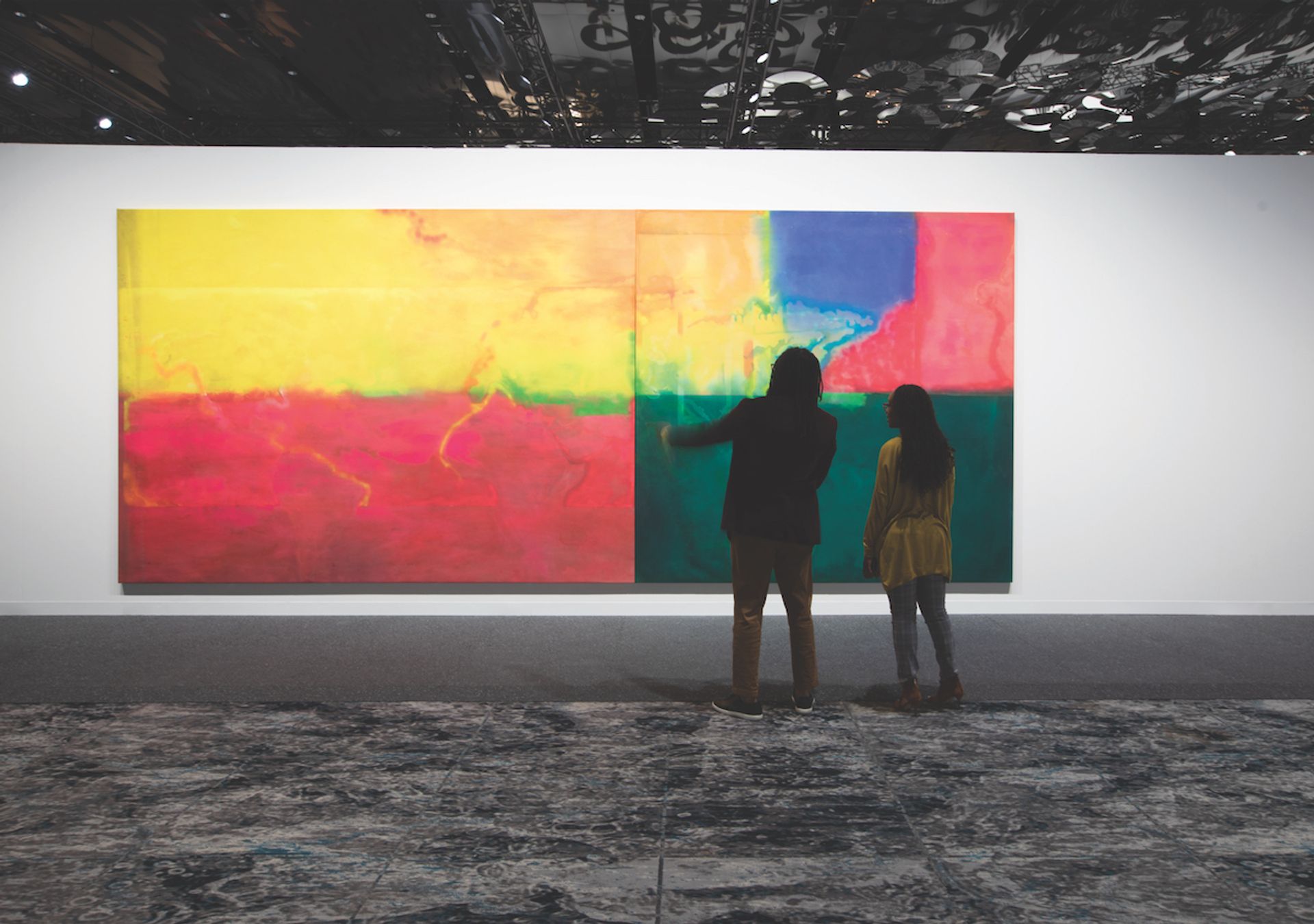
Frank Bowling, Africa to Australia (1971), Hales: First exhibited in New York in 1971 at the Guyana-born artist’s solo exhibition at the Whitney Museum of American Art, this monumental acrylic on canvas is part of Bowling’s “map” paintings—a series that uses world maps as a tool to consider notions of colour and African identity. “You can clearly see the influence of the Abstract Expressionists,” Arriola says, which Bowling advanced by adding a post-colonial discourse.
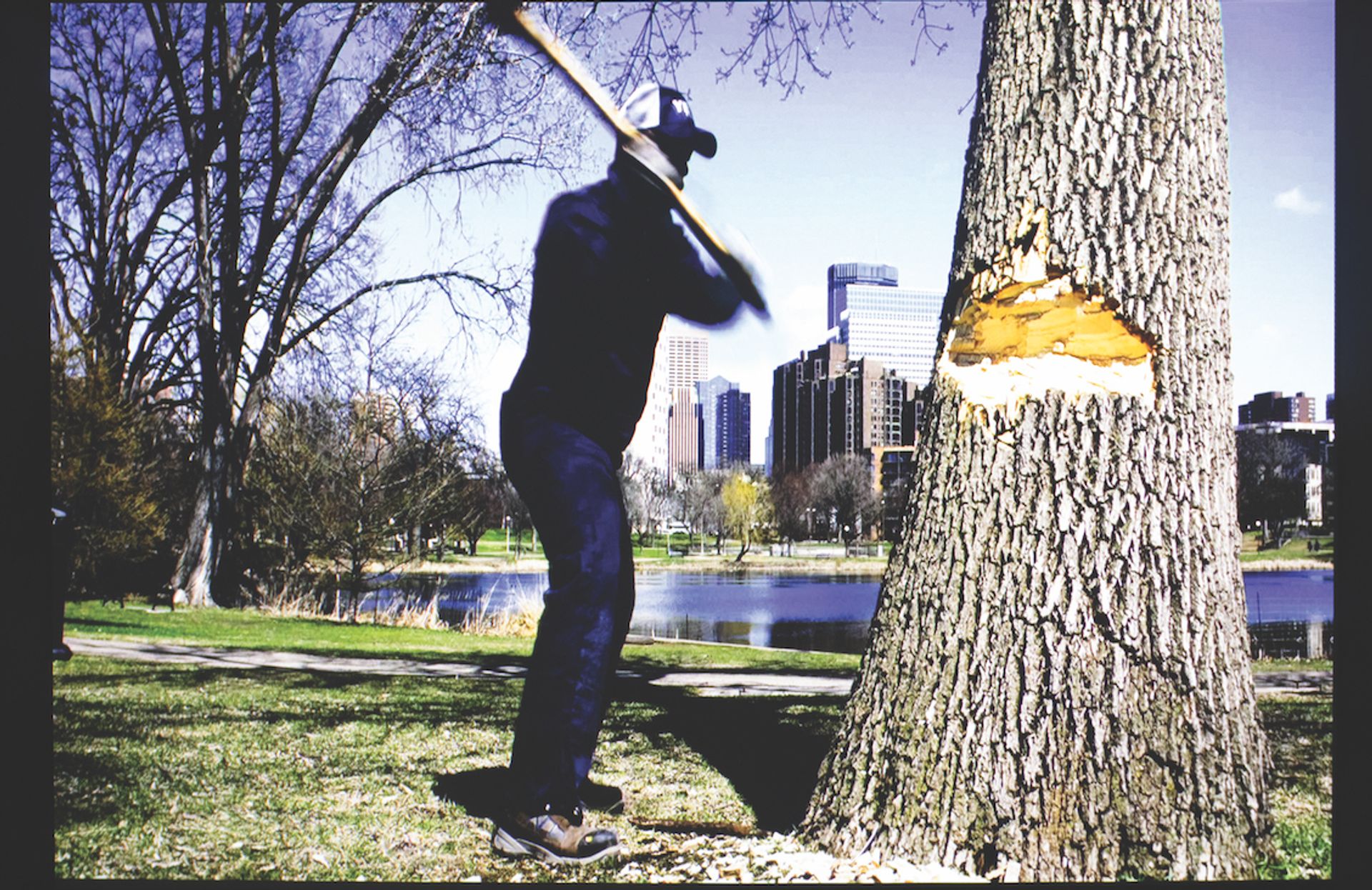
Theaster Gates, Dance of Malaga (2019), Richard Gray Gallery, Regen Projects, White Cube: The Chicago-based artist has weaved together historic film footage, photographs and original audio recordings with newly filmed segments and a musical score to tell the story of Malaga Island, a 40-acre expanse in Casco Bay, Maine. An inter-racial community lived on the island from the end of the American Civil War in 1865 until 1912, when false accusations of degenerate behaviour resulted in its inhabitants being given an ultimatum by the state: either leave or be forcibly removed. Arriola describes Gates’s latest film as “a beautiful non- linear narrative” that explores the history of the island and issues such as race, sexuality and inequality in the northern part of the US.
Alexis Smith, Fool’s Gold (1982), Garth Greenan Gallery: Vultures ominously circle overhead as a weary gold miner, pickaxe slung over his shoulder, leads a bikini-clad woman on a donkey through a desert landscape in this large, mixed-media mural by Alexis Smith. The scene is framed by the words: “Sometimes men went crazy from the heat”. “Much of her work has to do with revisiting pulp fiction,” Arriola says of the US artist, who last exhibited this piece nearly 30 years ago at her retrospective in 1991 at New York’s Whitney Museum of American Art. “She often looks at how pulp fiction manipulates the clichés of what a woman should be.” David Owens
In Pictures | Art Basel thinks even bigger with Meridians
The new section highlights performance and large-scale works of art
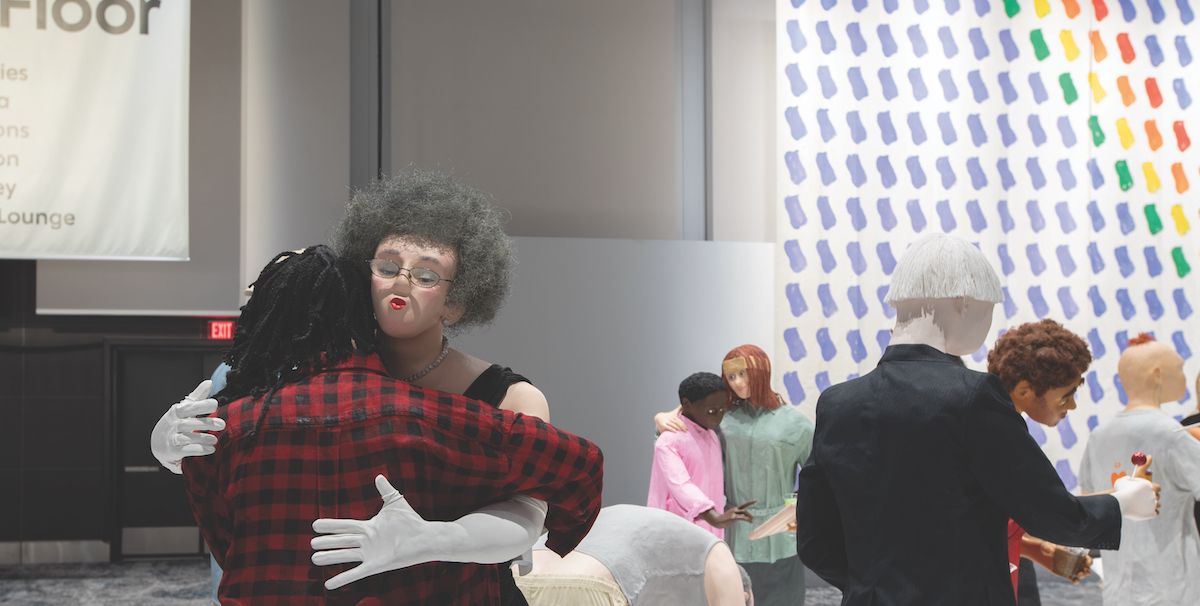
Tom Friedman Cocktail Party (2015) Stephen Friedman Gallery, Luhring Augustine

